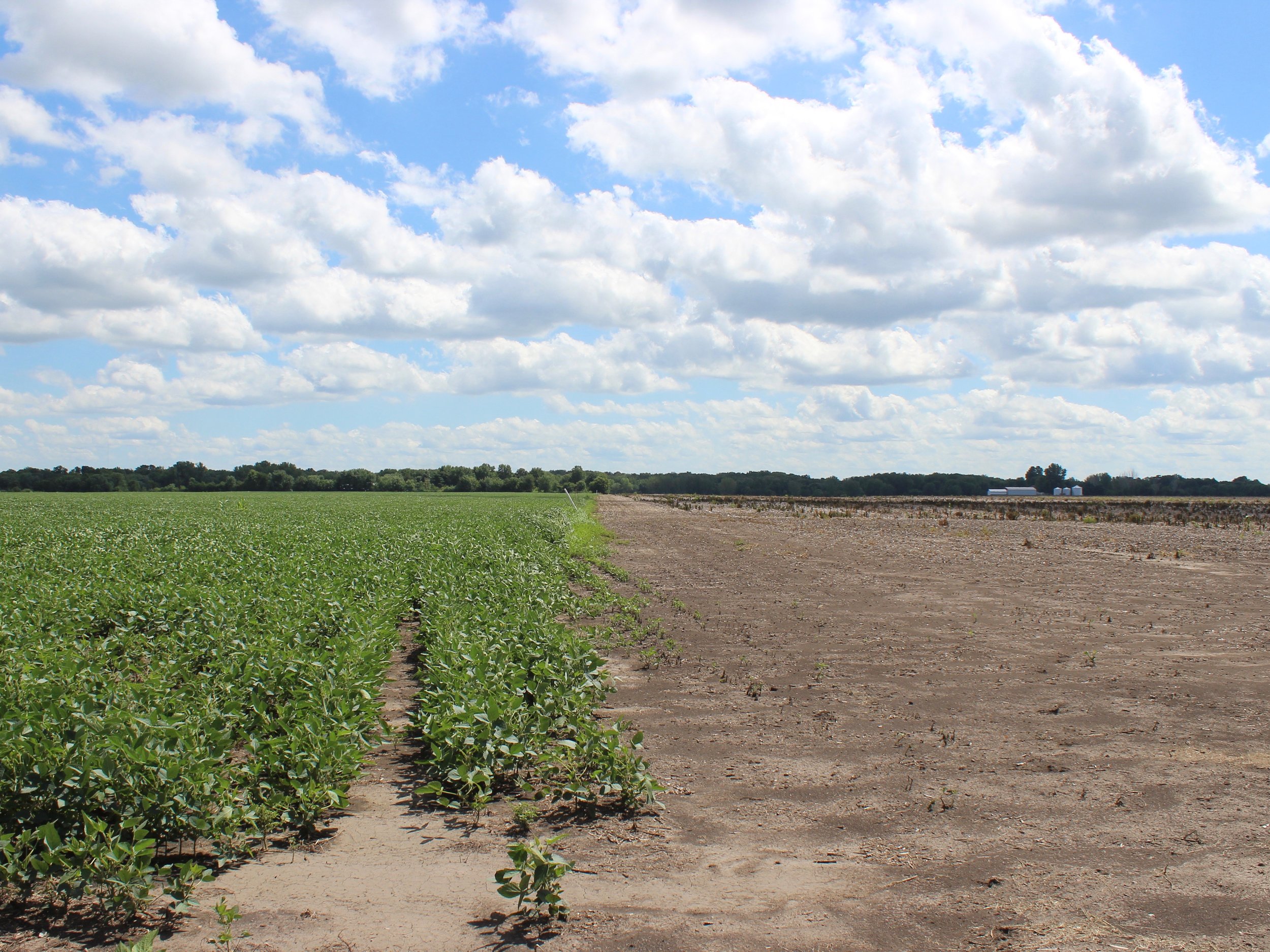Crop estimates deliver 'gut punch'
USDA corn, soybean estimates down, but higher than expected for corn, dropping prices
Soybeans grow next to a barren field in central Illinois. (One Illinois/Ted Cox)
By Ted Cox
The U.S. Department of Agriculture released new crop estimates this week, and while the forecast corn harvest was stronger than expected, that nevertheless delivered a “gut punch” to farmers, according to a farm report, by raising the supply and lowering prices.
The USDA released a new Crop Production report Monday. It found that Illinois corn production was projected to be down 17 percent from last year, with soybeans down 21 percent after heavy rains and flooding delayed or even prevented planting this spring. Both were even worse than the national average, which projects that the U.S. corn crop will drop 14 percent and soybeans 19 percent.
According to the report, corn acreage held fairly steady, down from 10.9 million acres last year to 10.5 million this year, but the yield per acre dropped from 210 bushels last year to 181 this year, and the overall production dropped from 2.3 billion bushels last year to 1.9 billion bushels this year.
Illinois soybeans went from 10.8 million acres to 9.9 million, with the yield down 65 bushels an acre last year to 55 this year, and overall production down from 699 million bushels to 547 bushels.
Illinois Department of Agriculture Director John Sullivan told the Peoria Journal Star that farmers were “surprised” by this estimates, and “they expected them to be much lower.”
But that was a double-edged sword. The higher production raised the supply without raising the demand, so prices dropped. A report on FarmWeekNow.com called it “another gut punch” for farmers. One market analyst called it “shocking.”
In this week’s USDA Crop Progress report, just 4 percent of Illinois corn was considered excellent, 36 percent good, and 39 percent fair, but that left more than a fifth, 21 percent, rated either poor or very poor. Soybeans were similar, with 4 percent excellent, 35 percent good, and 38 percent fair, but that left 23 percent either poor or very poor. The percentage of both the corn and soybean crops rated poor or very poor improved a point from last week, when the USDA declared the entire state an agriculture disaster.

